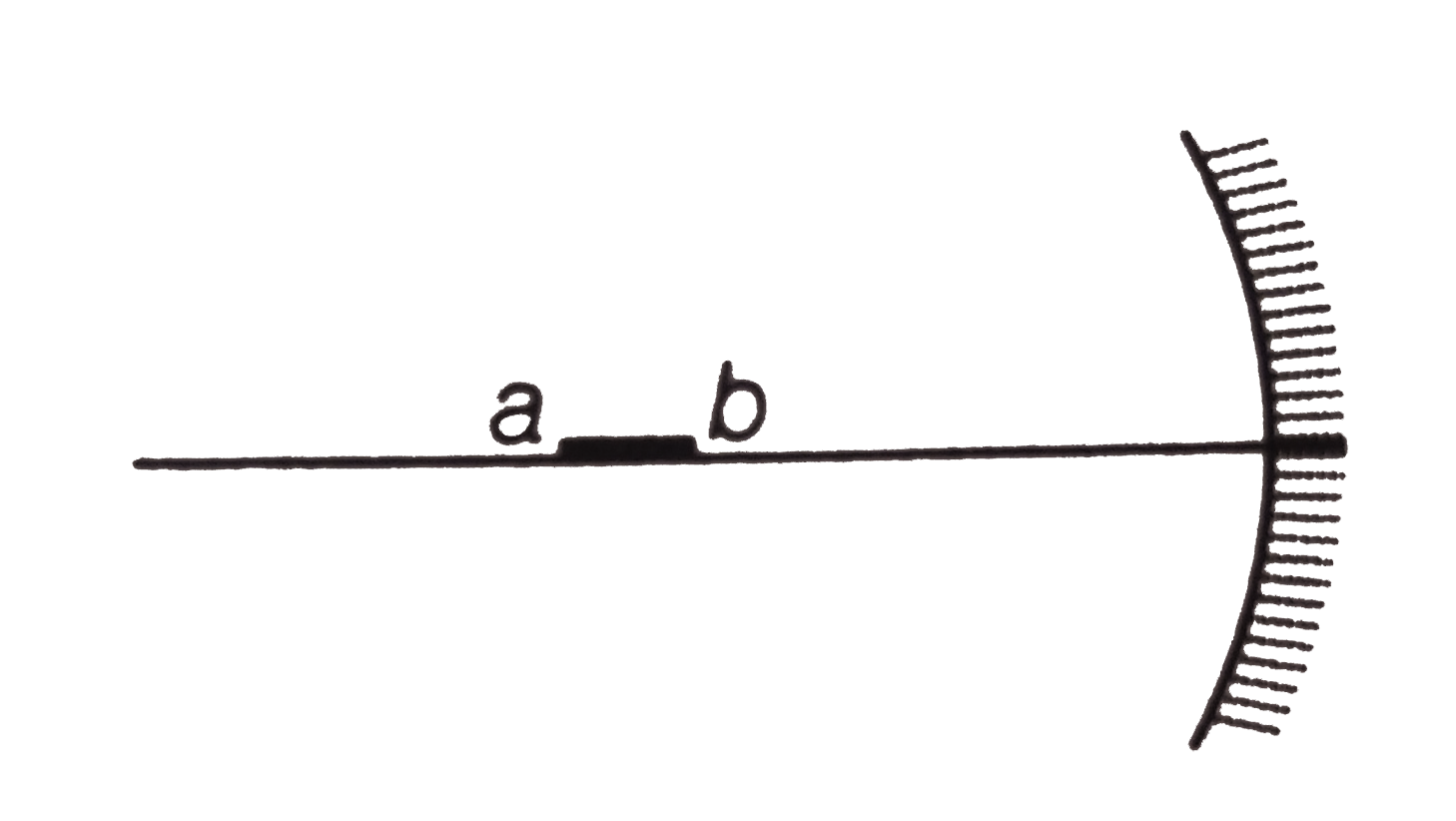When an object is kept at a distance of 30cm from a concave mirror, the image is formed at a distance of 10 cm. if the object is moved with a speed of 9 cm/s, find the speed (in cm/s) with which image moves.
The correct Answer is:1
To solve the problem step by step, we will use the mirror formula and differentiate it to find the relationship between the speeds of the object and the image.
Step 1: Write the Mirror Formula
The mirror formula for a concave mirror is given by:
1f=1u+1v
where:
- f is the focal length of the mirror,
- u is the object distance (negative for concave mirrors),
- v is the image distance (positive for real images).
Step 2: Identify Given Values
From the problem, we have:
- Object distance, u=−30 cm (negative because it's a concave mirror),
- Image distance, v=10 cm,
- Speed of the object, dudt=−9 cm/s (negative because the object is moving towards the mirror).
Step 3: Differentiate the Mirror Formula
Differentiating the mirror formula with respect to time t:
ddt(1u)+ddt(1v)=0
This gives us:
−1u2dudt−1v2dvdt=0
Step 4: Rearranging the Equation
Rearranging the equation gives:
dvdt=−v2u2dudt
Step 5: Substitute the Known Values
Substituting the known values into the equation:
- u=−30 cm,
- v=10 cm,
- dudt=−9 cm/s.
Now substituting these values:
dvdt=−(10)2(−30)2⋅(−9)
Calculating:
dvdt=−100900⋅(−9)=100⋅9900=900900=1 cm/s
Step 6: Conclusion
The speed with which the image moves is:
dvdt=1 cm/s
The mirror formula for a concave mirror is given by:
1f=1u+1v
where:
- f is the focal length of the mirror,
- u is the object distance (negative for concave mirrors),
- v is the image distance (positive for real images).
From the problem, we have:
- Object distance, u=−30 cm (negative because it's a concave mirror),
- Image distance, v=10 cm,
- Speed of the object, dudt=−9 cm/s (negative because the object is moving towards the mirror).
Differentiating the mirror formula with respect to time t:
ddt(1u)+ddt(1v)=0
This gives us:
−1u2dudt−1v2dvdt=0
Rearranging the equation gives:
dvdt=−v2u2dudt
Substituting the known values into the equation:
- u=−30 cm,
- v=10 cm,
- dudt=−9 cm/s.
dvdt=−(10)2(−30)2⋅(−9)
Calculating:
dvdt=−100900⋅(−9)=100⋅9900=900900=1 cm/s
The speed with which the image moves is:
dvdt=1 cm/s
Topper's Solved these Questions
Similar Questions
When an object is kept at a distance of 30cm from a concave mirror, the image is formed at a distance of 10 cm. If the object is moved with a speed of 9cms−1 the speed with which the image moves is
View SolutionAn object is placed at a distance of 30 cm from a concave mirror and its real image is formed at a distance of 30 cm from the mirror. The focal length of the mirror is
View Solution
Knowledge Check
When an object is kept at a distance of 30cm from a concave mirror, the image is formed at a distance of 10 cm. If the object is moved with a speed of 9ms−1 the speed with which the image moves is
A10ms−1B1ms−1C9ms−1D0.9ms−1
For an object placed at a distance 20 cm from a concave mirror, the image is formed at the same position. What is the focal length of the mirror?
View SolutionA concave mirror forms an image of the sun at a distance of 12 cm from it.
View SolutionAn object is placed 40 cm from a concave mirror of focal length 20 cm. The image formed is
View SolutionAn object is placed at a distance of 20 cm from a concave mirror of focal lenght 10 cm. What is the image distance?
View SolutionAn object 2.5 cm high is placed at a distance of 10 cm from a concave mirror of radius of curvature 30 cm The size of the image is
View SolutionWhen an object of height 1 cm its kept at a distance 4 cm from a concave mirror, its erect image of height 1.5 cm is formed at a distance 6 cm behind the mirror. Find the focal length of mirror.
View Solution
A small object ab of size 1mm is kept at a distance of 40 cm form a concave mirror of focal length 30 cm. Make image of this object.
View Solution
